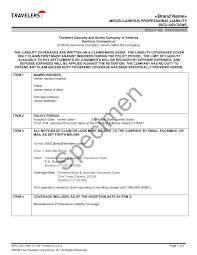
Emergency medical insurance can cover the costs of medical care when you're in need of immediate medical attention. This insurance may not cover you for visits to out-of-network hospitals. While the out-of-network hospital doesn't require prior approval from your insurance company, there are rules and deductibles that you should be aware of before using their services.
Catastrophic coverage for health
Catastrophic plans offer coverage for medical expenses in the event that a catastrophic event occurs. These policies will pay up to the deductible amount for covered medical costs. However, if the patient is hospitalized or has surgery, the catastrophic plan will cover all the expenses. Such plans provide emergency coverage as well as free preventive and primary care visits.
Catastrophic health coverage for emergency health insurance is often a good option for those without major medical coverage. Catastrophic plans can be affordable and usually require lower monthly premiums. Although they have higher deductibles than traditional medical insurance, they are usually less expensive. They're best for individuals who can't afford premiums or are uninsured.

Catastrophic Travel Medical Insurance
You might consider a catastrophic plan if you are searching for low-cost travel medical insurance. These plans provide low monthly premiums with high deductibles. They are a great way of protecting yourself in the worst-case scenario. It is important to remember that your annual deductible (usually a few thousand dollars) will be required to cover all medical expenses.
A catastrophic travel medical plan might be an affordable option, but it is not for everyone. Basic catastrophic plans don't cover chronic illnesses and are limited to emergency coverage. These plans might not be suitable for senior citizens who are regularly in need of medical supervision. They may also not cover preventive care services, such as annual check-ups.
Temporary coverage for non-immigrants
The U.S. offers emergency medical insurance to non-immigrant temporary residents. This includes undocumented students and undocumented aliens. It covers any emergency medical condition for which the patient needs emergency medical care. Preventive care is not covered by the policy. If you are unsure about your eligibility, enroll in preapproval. This will allow you to receive a pre-approval letter up to 12 months in advance. Call 311 for more information or to register online. Additionally, you will need proof of identity, income and residency in the State.
Temporary non-immigrants might also be eligible to receive Medicaid emergency medical treatment. They will need to verify their immigration status with the USCIS. Although your documents might be expired, this does not mean that you cannot receive emergency medical treatment.

In-house cost-sharing for emergency medical insurance
In the event that you need emergency medical care but don't have the appropriate insurance coverage, you may have to pay out-of-network fees. This applies to emergency services, hospitalizations and emergency rooms. This includes the hospital bill as well as any bills from doctors or other providers that are not part of the network. It also applies to in-hospital services provided by doctors who are not in-network, such as anesthesia and pathology.
Many health plans include some cost-sharing or out-of pocket costs. The type of health plan and service will determine the cost of these services. Cost-sharing is usually in the form of copayments, coinsurance and deductibles. The policy will outline the copayments and deductible amounts. Some plans also require that you pay a copayment to cover emergency room visits.